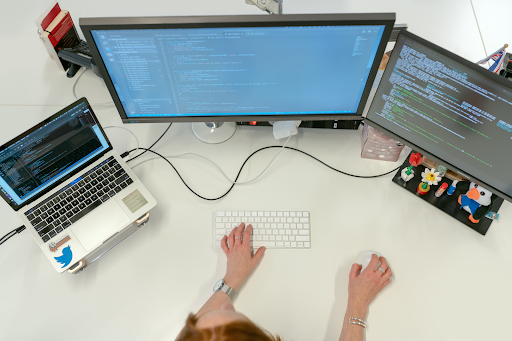A sanity check can be a valuable asset when it comes to successful projects. But what exactly is a sanity check? And how can it help you meet your project objectives? Sanity checks offer businesses an effective way to identify and address mistakes before repeating them, thereby guaranteeing better quality service in our ever-evolving digital landscape.
This article will explore the definition of a sanity check and discuss its importance for achieving business objectives, from improved quality assurance to accelerated delivery timelines. We’ll also outline key advantages associated with implementing this process to ensure correctness before continuing development.
Read on as we dive into this topic and provide actionable insights that you can use today.
What Is a Sanity Check?
One of the main tasks in any business project is to ensure that the systems developed meet the requirements of the end users. This is where sanity testing comes in.
Sanity testing is a quick check that is performed on the developed software to make sure it meets the critical functionality needed for business operations. It’s different from other testing types in that it is not used to identify bugs but rather to check if the system is stable enough to initiate full or, as it is called, regression testing. Regression testing is a type of software testing that confirms that modified or updated components do not impact the overall functionality of the software.
A sanity check is a crucial step in the software testing process as it helps in detecting major issues at an early stage. A failure in the sanity test means that the software is not fit for further testing, and a modified version has to be developed.
Think of it as a quick checkup on the overall health of something that has been put into place. This process usually occurs after a major change or update has taken place, ensuring that nothing unforeseen has disrupted operations. It’s essential to make sure that a company is proceeding with confidence and avoiding potential mishaps that could lead to bigger issues down the road.
Sanity testing may seem like a small cog in the grand scheme of things, but it’s a necessary one that serves as a safeguard for companies of all sizes.
Features of sanity testing
Sanity testing is a valuable form of software assessment that stands apart from other types due to its unique approach. Below, we’ll take a look at some of its key features.
- It is a brief and simple process that is easily designed and performed.
- The process is unscripted and undocumented.
- It is considered a narrow approach, where limited functionalities are covered deeply.
- It covers a basic assessment of the software’s behaviour.
- The testing is normally performed manually.
When Is Sanity Testing Performed?
The sanity test is a very brief run-through of key functionalities in any software application. It must be conducted in various scenarios, such as after new features are implemented, or bug fixes are applied.
It should always take place prior to production deployment and integration into the overall system. Ultimately, its purpose is to ensure that small changes don’t cause major repercussions downstream, preserving both stability and progress.
Sanity testing in software
Sanity testing is a pivotal step in the software development process, providing crucial insights into the health of an application. By verifying that fundamental features are functioning correctly and efficiently, a sanity test can quickly reveal major issues before more costly time and resources have been allocated to further examination.
This allows developers to rest assured that their product is ready for rigorous inspection, resulting in reliable yet cost-effective applications for customers.
Sanity testing in marketing
With marketing and business operations becoming increasingly complex these days, it’s crucial not to underestimate the role of sanity testing. Sanity tests are essential for ensuring that the fundamental systems of an organization work as they should and that the complex web of marketing and business operations doesn’t spiral out of control.
Marketing can be frantic, with so many campaigns, data, and strategies to deal with. To stay on track and achieve targets, it is vital to regularly perform a marketing sanity check. This requires looking at your approach differently, and scrutinizing your audience and ROI. If you take the time to evaluate your efforts, you’ll know what to change and become successful when launching a new product.
How to Do Sanity Testing
Sanity testing involves three steps, which are quite straightforward. First, the new functionalities and features of the application are identified, as well as any modifications included in the code. In other words, we need to determine the scope of the sanity test in terms of changes that need to be made.
Once we’ve identified the features and changes, we evaluate and modify them to ensure we’re in line with the Software Requirements Specification (SRS.) Finally, we need to test a small portion of the new components of the application in detail.
You can either test manually or go for automation testing. The choice of approach depends on the application requirements or the bugs identified.

The Advantages of Sanity Testing
Sanity testing can be an incredibly helpful tool for making sure that your project works as expected before completing more extensive and costly forms of testing. By understanding what sanity tests are and the advantages they offer, you can start utilizing them to boost overall development success for any software project.
Let’s take a look at some of the key advantages sanity testing offers.
- It helps in identifying errors and defects early in the development cycle. This ensures that the product is refined and the end-users don’t experience any issues.
- It is cost-effective. Sanity testing is like a quick checkup for a system. It’s fast, it doesn’t require many resources, and it’s a cheap way to make sure everything is still working the way it’s supposed to.
- The testing process is fast and versatile. It allows developers to work on more complex tasks without worrying about errors.
- It can save a significant amount of time by avoiding the need for complete re-testing. By performing sanity testing, developers can easily detect any glitches and fix them immediately, saving both time and resources.
Sanity testing ensures that everything – the installations, updates, patches, configurations, and underlying systems – works together seamlessly so that the product runs smoothly. The result is fewer headaches and greater efficiency all around.
Sanity Testing vs. Smoke Testing – What’s the Difference?
Sanity testing and smoke testing are terms that are often used interchangeably in the software testing industry. Although they are similar in many ways, they do have their own unique differences. A sanity test is a quick test that aims to verify if newly added modules to a software build are up and running and ready for further examination.
A smoke test, on the other hand, verifies all core components are functioning as intended for a successful product launch. While both tests aim to ensure that an application is working as it should be, the key difference lies in the scope and depth of the tests.
Sanity Testing Strategy – Common Mistakes to Avoid
As you evaluate your sanity testing strategy, there are also certain pitfalls to avoid.
- Ensure that all features of the product have been accounted for in the suite. A lack of coverage can be detrimental, and too much depth may fail to serve its purpose.
- If automation is possible, take advantage of it. Relying solely on manual testing could limit efficiency gains and possibly cause errors or omissions.
- Don’t forget about analytics. Making sure to include them in a continually-evolving suite will ensure that any changes made during development are properly tracked. This way, we can keep results up-to-date.
- Don’t disregard insights from failed tests. They provide invaluable information if potential areas need further debugging/amendments before launch time arrives.
Ensure a Quality End Product
As mentioned, completing your sanity check process can help identify any potential issues early on when they are still manageable. This not only saves money but should also give you more confidence in the projects and products you are launching. Sanity checks ensure your end product will be something your customers and clients will truly love, which ultimately results in successful and satisfied customers who will keep coming back for more.

